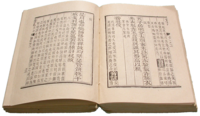
Photo from wikipedia
Pedagogic criticism, Ben Knights argues in this wide-ranging and thoughtful book, is an attempt to “bring into focus the transactions between the study and interpretation of texts and the social… Click to show full abstract
Pedagogic criticism, Ben Knights argues in this wide-ranging and thoughtful book, is an attempt to “bring into focus the transactions between the study and interpretation of texts and the social forms and rituals of pedagogy” (1). Knights draws together a historiography of the rise of English Studies in the UK, literary criticism, close readings of writers from Henry James to Annie Proulx, as well as critical reflections on pedagogy. Entangling both the study of literature and teaching demonstrates how “pedagogic criticism involves reading texts through teaching, and teaching through texts” (1). This simple formulation is the book’s key strength: it is across the topography of the teaching–reading relationship that Knights mounts his thesis. Pedagogic Criticism argues that the study of English should be “conceptualised as a border subject” (9). The shape and substance of this discipline—caught on the edges of other subject areas, rooted in networks and spaces of learning, built from a variety of perspectives and orientations—is such that Knights’ book traffics in images of spatiality: from “topographies” and “boundaries” to “landscapes,” (158–159) and “places on the fringe” (188), as well as corporeal geographies like “interiority,” “membranes” and “excised tissue” (198). The “energies generated at and across borders” (9) drive the book’s intellectual journey. Knights maps numerous of historical, theoretical, literary and pedagogic encounters: for instance, he argues that “The space of teaching is a threshold, a liminal or transitional space” (6). As middle space, the classroom mirrors the discipline of English, which is multivalent. In chapter 1, Knights argues that pedagogic discourse has led us to see “Education as a ‘becoming’” (3), both at an individual and group level. Such ongoing transformation plays out in the relationship between student, teacher
Journal Title: Arts and Humanities in Higher Education
Year Published: 2020
Link to full text (if available)
Share on Social Media: Sign Up to like & get
recommendations!